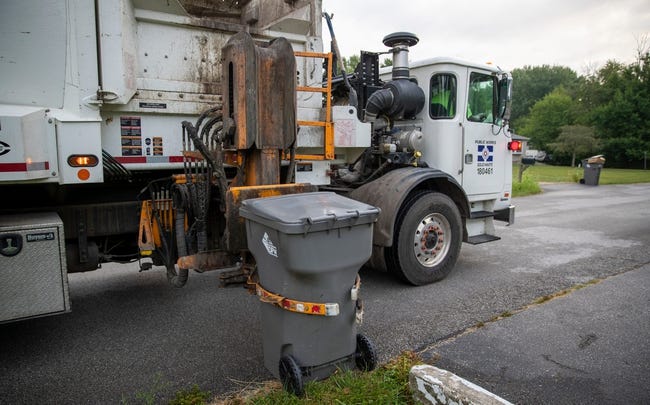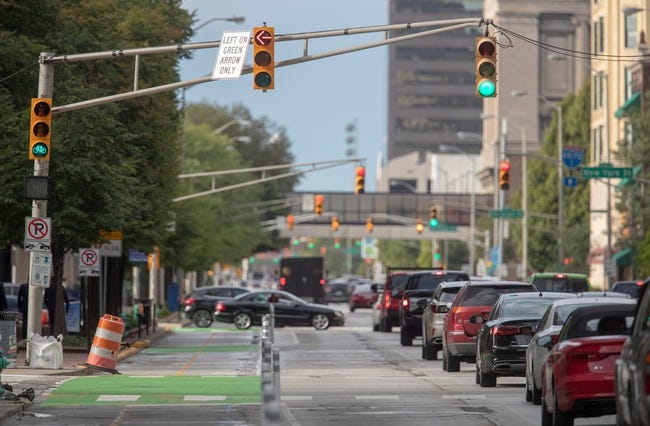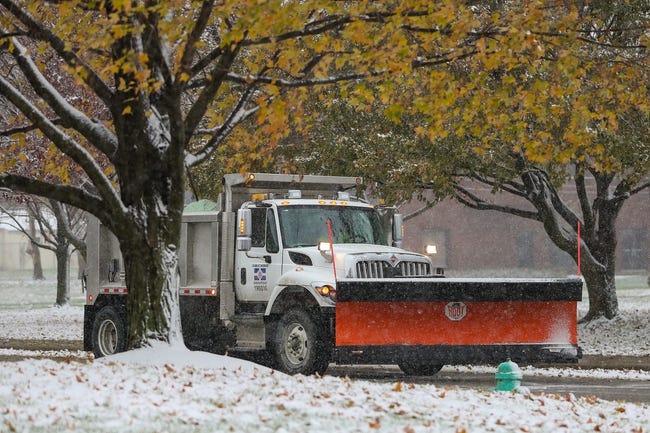Part of the executive branch, the Department of Public Works is the largest of the departments operating under the . Originally established in 1909, the Board of Public Works and Sanitation carried out most of the modern department’s functions in addition to its responsibility for streets and public parks. Its mission is to provide Indianapolis residents with a clean, healthy, and safe environment. The jurisdiction of the department is defined as the Indianapolis Sanitary District (ISD), which includes an area larger than the “old city” limits but smaller than the consolidated city boundaries.

Its territory is not required to be compact or contiguous, a circumstance which has resulted in islands of service surrounded by territory not served by the district. The ISD constitutes a special taxing district. Residents and organizations within the district, as well as other users, pay taxes and fees that finance such functions as waste disposal and bond retirement. The Department of Public Works has gone through several reorganizations since its inception under Unigov. Its basic responsibilities, however, have remained fairly constant.
The department is responsible for sanitation, flood control, drainage, air pollution control, and the management of municipal property. The department did not receive jurisdiction over air pollution until 1974 when state and federal legislation created such regulations for the first time. The department monitors and enforces air quality according to EPA and Marion County air pollution standards.
The department is no longer responsible for municipal properties; the assumed all real estate functions in 1992. This office formerly handled citizen inquiries, but in the early 1990s, the Mayor’s Action Center assumed this responsibility for all Unigov departments. The Department of Capital Asset Management became a part of the Department of Public Works in 2001.
Until 2001, the Department of Public Works was responsible for liquid waste disposal, advanced wastewater treatment, and sewer maintenance. These functions then came under the umbrella of Citizens Energy Group. With this partnership, the city is able to address critical infrastructure.
The Director and Board of Public Works
The director is appointed by the mayor with the approval of the and is responsible for policy, personnel, and fiscal matters. The Board of Public Works supervises the director. However, the director also serves as board chair. The board includes six volunteer members. The mayor appoints three members, and the City-County Council appoints the other three. The board helps make policy for the department, reviews the budget, holds hearings as required by law, approves all contracts, and determines special assessments for local improvements.
Division of Policy and Planning
The department includes a Division of Policy and Planning, which provides all administrative support for the department. This division is responsible for strategic planning, budgets and accounting, Americans with Disabilities Act compliance, and public information. The Division of Policy and Planning also provides a legislative liaison.
Office of Sustainability
In 2008 the Department of Public Works created the Office of Sustainability. Driven by the City’s environmental agenda, the office works to build public-private partnerships to raise community awareness of environmentally responsible community actions and development. The office aims to follow best practices in its efforts to achieve greater environmental and economic resiliency. Its initiatives include programs to improve air quality, stormwater management, energy efficiency, and environmental planning. Specific programming includes recycling, community gardens, urban gardening, green buildings and development, bikeways and bike boxes, solar energy and building efficiency. The office’s goal is to create a more vital and sustainable city that improves and protects the quality of life of Indianapolis residents in the present and future.

Office of Land Stewardship
When the Office of Land Stewardship was established in 1992, it managed less than 50 acres. As of 2020, it works to protect and maintain 1,700 acres of natural park areas and rain gardens. The office cares for 37 properties and is committed to preserving and protecting native wildlife and plant habitats. It is responsible for providing recreation opportunities, protecting air quality, and addressing stormwater issues. It also educates the public about the value of natural areas. In 2015, due to the efforts of the office, Indianapolis became a National Wildlife Federation Top 10 City for Wildlife.
Divisions of Fleet Services and Engineering
Divisions for Fleet Services and Engineering also operate within the department. The Division of Fleet Services manages all aspects of the operation, maintenance, purchase, lease, and sale of vehicles for various city departments and agencies. The Division of Engineering “assesses infrastructure needs within the city, develops projects, and carries out the construction”.

Division of Operations
The Division of Operations is the largest of the Department of Public Works. It contains various sections:
Solid Waste Management Section
The Solid Waste Management Section is responsible for trash collection, including the removal of dead animals, heavy trash, and abandoned vehicles from public property. The section also investigates illegal dumping and provides a Tox-Drop program for residents to dispose of toxic materials, such as paint thinners and fertilizers, not accepted in regular garbage pickup.
Stormwater Management Section
The Stormwater Management Section of the Division of Operations continues to oversee the city’s stormwater system, including neighborhood drainage, levees and dams. It also continues to release reports on the administration, permitting and enforcement of the National Pollutant Discharge Elimination System. This system is intended to prevent water pollution by regulating the discharge of pollutants.
Maintenance Operations Section
The Maintenance Operations Section of the division provides street and pothole repair and snow removal. It also maintains traffic signals, levees, bridges, and alleys. The Operations Section plans for special events. It removes graffiti, weeds, and grass in public right-of-ways, and demolishes abandoned buildings.
Urban Forestry Section
The Urban Forestry Section is responsible for tree maintenance and removal. It evaluates threats caused by city-owned trees. The section processes tree inspection requests, prunes trees, coordinates tree planting in parks and public right-of-ways, and manages threats to trees from insects and exotic pests. It pursues and manages the street tree inventory database and the partnerships that help maintain and increase the tree canopy in the city.

Help improve this entry
Contribute information, offer corrections, suggest images.
You can also recommend new entries related to this topic.